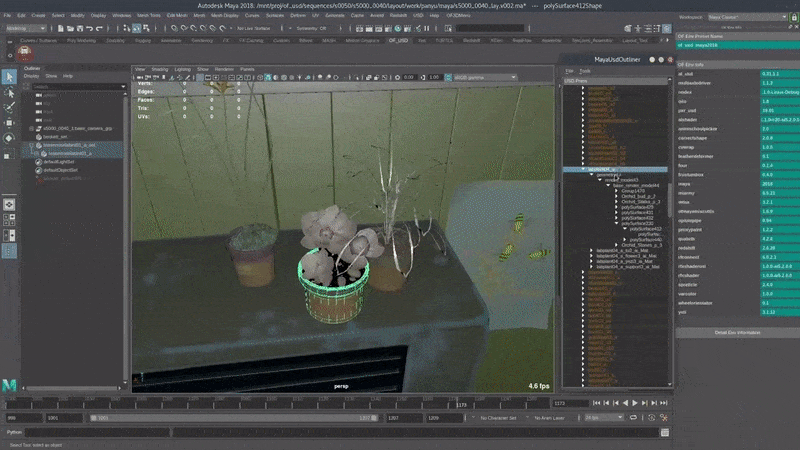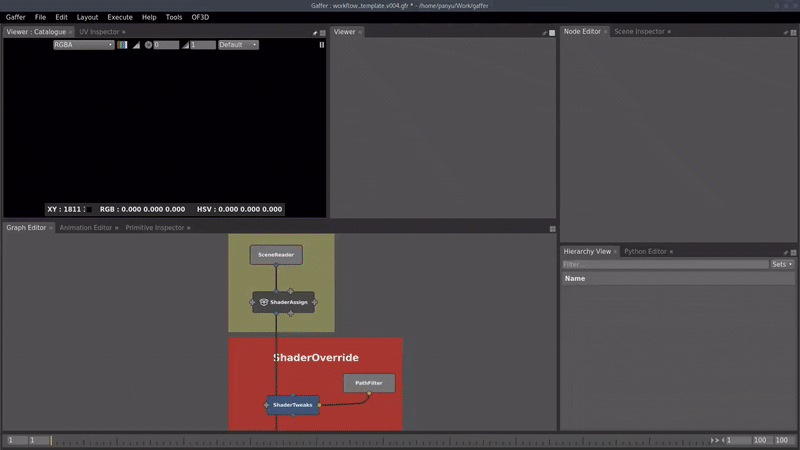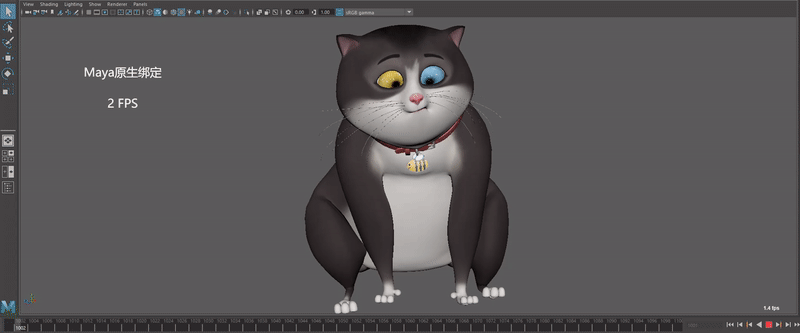This year marks a number of highlights of China's animation market. Empowered by cutting-edge technologies, animation as a visual art is becoming more and more“hardcore”.
Recently, three new technologies developed independently by Original Force have been officially unveiled and now are put into complete production in the film and TV supply industry. The development team of Original Force’s Digital Technology R&D Center spent nearly a year bringing OF-USD, Gaffer and RigX into existence. They not only solved the pain point in the production of animation movie, but also overturned the previous production of animation films, greatly improving the iteration speed of animation production. These three technologies will be fully available and free to the Chinese animation industry in 2020.
Original Force’s Independently Developed OF-USD and Gaffer Technologies Can Provide Complete USD Support for MAYA and Light Rendering
Universal Scene Description (USD), an open source animation tool developed by Pixar Animation Studio, is of great importance to animation producers. As an open source file format library with corresponding data parsing engine, USD enables seamless 3D data transfer between different processes and animation software tools. However, USD represents an open source standard, and software vendors have not yet started to develop corresponding native support. The complete implementation of USD relies mostly on the customization of more compatible systems by independent development teams. In China, there are not many companies that are up to this task.
MAYA is the most used animation software in China, but it has not been able to provide native support for USD and the official support is still in the experimental stage. So considering the animation production need of the Company, the development team of Original Force's Digital Technology R&D Center independently developed a series of process tools and functions to provide complete USD support for MAYA, realizing the seamless integration of USD files throughout the light rendering process, from modeling to materials, lenses, rigging, animation, and visual effect. Meanwhile, the OF-USD technology developed independently by Original Force enables parallel editing in animation production. Artists of different production stages can make changes to the same assets and scenes simultaneously, save them, and then update them to other production stages. The same USD production file can be edited in upstream and downstream stages based on actual needs and work content.

“This technique allows the real-time conversion between USD files and MAYA scene files and real-time interactions of large scenes.”
Original Force's digital technology R&D staff explained with an example that a complex scene might contain more than one hundred objects, and the number of mesh patches may reach 10 million. In such cases, it will take more than one hour to open the scene, with the interaction speed delayed to less than one frame per second. The average time for the same scene to open in the USD process is less than 10 minutes, and the real-time interaction speed is more than 10 frames per second. Such huge scenes are not uncommon in film and animation projects, and USD-based tools can greatly improve the speed of reading and interacting with such files, making it easy for artists to process them quickly.
In addition, Original Force has developed a viewport with embedded USDview in MAYA for conversion between MAYA material networks and USD real-time material networks, which allows a quick preview of materials, switch between variants of digital assets, and real-time changes and release of USD file assets in the Maya viewport. And with the help of the latest Materialx material definition technology, Original Force's Digital Technology R&D Center has developed a real-time conversion function in different renderers and UE engine to realize truly seamless integration.

Original Force improves Gaffer's support for USD so that Gaffer, a high-performance open source rendering platform, can understand the conceptual structure of USD files in a more native manner, switch between variants of digital assets in its viewport, and provide ultimate support for USD in the light rendering step. With the utilization of the MaterialX material definition technology, conversion between MAYA material networks and Gaffer material networks is enabled, allowing USD assets carrying MaterialX material files to be rendered directly in Gaffer.
Original Force's New Independently Developed RigX Technology Provides a More Efficient Rigging Acceleration System
In animation production, rigging is a key step because every model needs to go through this before moving into the animation step. In order to push production technologies to a higher level, the industry has been trying to improve the performance of character rigging. Although the end product of film and TV production is a fixed offline rendering outcome, the ability to achieve a real-time level during the production process directly affects production efficiency.
Given the problem of serious degradation of character rigging performance, many companies have begun to develop new computing platforms, in an attempt to replace the current mainstream animation production software. These emerging computing platforms which aim at high performance might be able to achieve a real-time level, but there is still a common problem: the lack of many important features and the great difference between the usage of these platforms and that of legacy software makes it particularly difficult for production companies to migrate files to the new platforms. In addition, in CG production, in order to ensure the artistic effect and improve the rigging performance at the same time, some production companies may choose to rewrite key nodes after finishing the rigging. Although this method can present satisfactory artistic effect and performance, it requires high labor costs and cannot be used on a large scale.
Original Force's independently developed RigX technology is born in this very context. During the independent development process of RigX, the development team of Original Force’s Digital Technology R&D Center discovered the cause of the performance difference between legacy software and emerging computing platforms after analyzing character rigging files in a large number of projects. RigX converts the huge node diagrams in the rigging files into equivalent machine instructions and makes full use of the power of CPUs to minimize the runtime scheduling overhead.

According to our knowledge, RIgX automatically converts rigging files into C++ codes without the intervention of technicians or artists. In terms of acceleration effect, this method often generates a better final acceleration effect than the hand-written code approach because the entire rigging files can be processed equally in the automatic conversion process, saving the need to select a very small portion of rigging files for acceleration as in the case of manual conversion. Original Force's digital technology R&D staff shared a group of data, “For example, the frame rate of a MAYA rigging file per second can be increased to 24 from 2.4 after conversion, 10 times of the original MAYA native system. This allows animators to make more timely adjustments, greatly accelerating animation production.”
MAYA is currently one of the main pieces of software used for rigging production. RigX has independently developed a calculation backend that has the same functions as MAYA but is completely independent. It can fully automate the conversion of MAYA files into new high-performance files without human intervention. At the same time, the new computation backend enables rapid and easy migration of any MAYA rigging file to other software such as Unreal Engine, which is a huge breakthrough in animation production.
“Hardcore”is always a defining feature of Original Force, a company that is always committed to the deep integration of culture and technology. Harley Zhao, CEO of Original Force, said, “Most people assume that animation companies are producers of artwork, If that's the case, why can Hollywood be Hollywood? The reason is that they are not limited to art; instead, they are real high-tech companies that can apply many technologies to artwork. Original Force's Digital Technology R&D Center is committed to making breakthroughs in the field of technology, and I expect more excellent performance from them.”

 Message
Message

 Top
Top